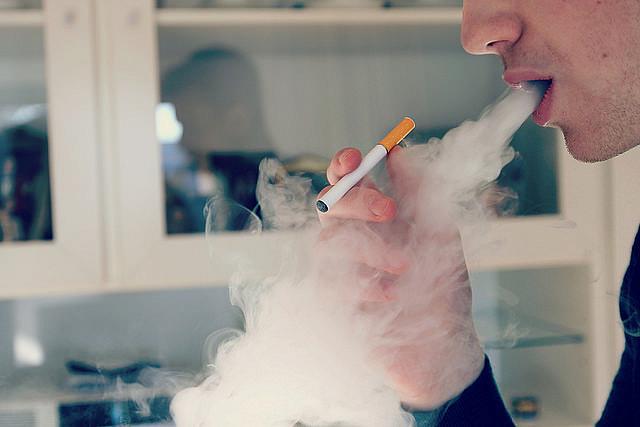Does vapor turn to smoke? Study of teens adds fuel to fire

It’s not unusual these days to feel like new technologies are outpacing our ability to fully comprehend and control them, as now seems to be the case with e-cigarettes. The ballooning industry has just recently found itself in the regulatory crosshairs, and prevailing opinion on such devices spans the gamut — are electronic cigarettes a life-saving crutch for committed smokers, or a gateway to more pernicious forms of nicotine for curious teens?
The needle moved a little further towards the latter this week after a widely reported new study in JAMA reported that teens who used e-cigarettes were more likely to later smoke regular tobacco products. Over the course of a year, the study followed more than 2,500 ninth graders at 10 high schools in Los Angeles, all of who were nonsmokers at the beginning of the study. AP’s Lindsey Tanner distilled the study’s results:
At the start, about 9 percent — 222 kids — said they had used e-cigarettes at least once, similar to rates seen in a recent national survey. Almost one-third of them tried cigarettes, cigars or water pipes within the following six months, versus just 8 percent of the kids who'd never tried e-cigarettes. The gap persisted when students were surveyed again, a year after the study began.
Observational studies can’t establish causation — in this case, the study can’t show that e-cigarettes themselves are what make kids more likely to smoke later. Maybe the risk-taking, rebellious kids who tried out e-cigarettes early on would’ve ended up smoking later regardless. Or maybe some another confounding variable is at play. When the study made adjustments for variables such as peers that smoke, impulsivity and parents’ education level, the link between e-cigarette use and later smoking became weaker — but it still remained.
That’s enough to push e-cigarettes further under a cloud of suspicion. In an accompanying editorial, Nancy Rigotti, a professor at Harvard Medical School and a well-known expert on tobacco, wrote that the study is “the strongest evidence to date that e-cigarettes might pose a health hazard by encouraging adolescents to start smoking conventional tobacco products.”
The unknown health effects of e-cigarettes, combined with their potential to lead to decidedly less healthy forms of smoking, has goaded some local governments into action, with questionable success. “Although many jurisdictions have laws that prevent sales of e-cigarettes to minors and use of e-cigarettes in public places, children and adolescents are increasingly exposed to e-cigarettes,” a February review article on kids’ exposure to e-cigarettes concluded.
The Internet is at least partly to blame. A study published in March found it was all too easy for minors to order e-cigarettes online: “Minors successfully received deliveries of e-cigarettes from 76.5 percent of purchase attempts, with no attempts by delivery companies to verify their ages at delivery and 95 percent of delivered orders simply left at the door.” The study found that many websites didn’t bother to verify the age of buyers.
So it’s reasonable to expect older kids and teens will continue to find ways to access e-cigarettes — just as they do with regular cigarettes. And as many have pointed out, we still don’t have a firm grasp on the health risks of the electronic versions — in part “because e-cigarettes entered the marketplace without being regulated as either drugs or devices,” as Harvard’s Rigotti noted in her editorial. (That could change if the FDA classifies liquid nicotine as a tobacco product, a move expected to take place later this year.)
But even it proves comparatively innocuous, it’s hard to imagine any upside to vaping for kids or teens, as one might argue there is for adult smokers (let’s bracket here the uniquely depressing scenario of a teen switching to e-cigarettes to wean off smoking). It makes intuitive sense that a taste for nicotine will lead to a smoking habit when the e-versions aren’t handy, too expensive, or suddenly passé. Intuition isn’t evidence, however, and it’ll take more research to say the e-cigarettes themselves coax kids into smoking. But it sounds like a reasonable working assumption while we wait.
[Photo by Vaping360 via Flickr.]
